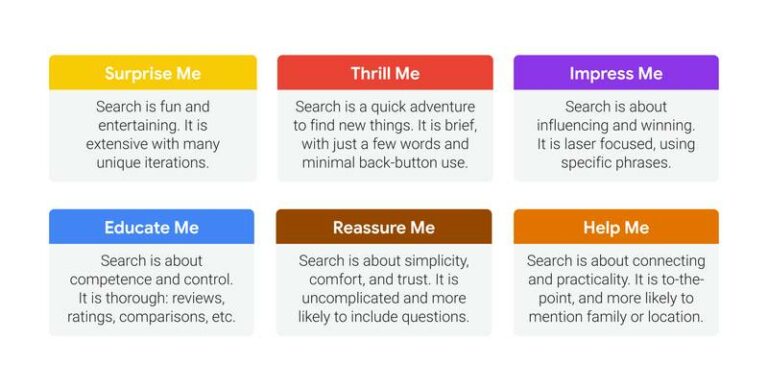They’ve been called user, buyer, marketing, and customer personas.
Whatever you call them, new approaches to creating these fictional characters can transform SEO, PPC, and content marketing.
Now, executives and senior managers in the search industry and digital marketing world can’t really be blamed for missing this emerging trend.
Unlike Rip Van Winkle, who fell asleep for 20 years, we’ve been losing sleep for the past year dreaming up new ways to adapt to sudden shifts in consumer behavior.
Why? Well, on March 11, 2020, the World Health Organization (WHO) declared that COVID-19 was a global pandemic, and all of our strategies and plans for boosting brand awareness, increasing website traffic, generating qualified leads, or improving sales conversions were knocked over like ninepins.
According to eMarketer, this was especially true in the two industries hit hardest by the pandemic:
- Travel – Where digital ad spending in the US cratered to just $3.24 billion in 2020, a staggering decline of 41.0% year-over-year (YoY).
- Automotive – Where digital ad spending in the US was $10.94 billion last year, a double-digit decrease of 18.2% YoY.
For the first time in 12 months, many of us have stopped pivoting past the latest twist and turn in the Coronavirus crisis and have started looking around for in-depth and actionable guides, tips, trends, and insights for surviving and thriving in the “new normal.”
In some respects, we’re feeling lucky that the new trend we may have missed only deals with creating customer personas. (Hey, when Van Winkle awoke in the Catskill Mountains after sleeping soundly for 20 years, he discovered that he’d missed the American Revolution.)
So, before skipping straight to new approaches to creating marketing and customer personas that could represent a revolution in SEO, PPC, and content marketing, let’s catch you up on best practices in building user and buyer personas.
Best Practices in Building User & Buyer Personas
The right place to start is reading Buyer Personas: A Beginner’s Guide for Marketers.
This guide tells you how to find the data you need about your target audience and how to start creating your buyer personas. It’s a seven-minute read.

Next, read How User Personas Can Improve Your SEO Performance, which explains why and how to create user personas that can help improve SEO performance. It’s an eight-minute read.

Then, read 5 Ways Personas Can Improve Your Content Marketing.
This post outlines a simple five-step framework for applying a buyer persona to your content marketing strategy. It’s an 11-minute read.

Finally, read How to Use Personas to Boost Your PPC Performance for tips to help you leverage personas for paid search.

Revisiting Customer/Buyer Personas
Now, these columns reflected the best practices in building marketing personas before a year like no other changed our assumptions that we have a good bead on things.
To be fair, most business-to-business (B2B) and business-to-consumer (B2C) organizations responded quickly to the challenges of the pandemic.
But digital marketers for all types of organizations discovered that the biggest challenge was adjusting to changing customer behavior, which was shifting rapidly and unpredictably amid the coronavirus pandemic.
During July 2020, the Content Marketing Institute (CMI) and MarketingProfs added some new questions to their 11th annual Content Marketing Benchmarks, Budgets, and Trends reports to see how content marketers were faring several months into the pandemic.
They published their B2B report on Sept. 30, 2020, their Manufacturing report on Nov. 18, 2020, their B2C report on Jan. 27, 2021, and their Enterprise report on Feb. 24, 20201.
No matter how they sliced and diced their data, a similar picture emerged. Many content marketers had changed their targeting/messaging strategy, for example, but fewer had revisited their customer/buyer personas.
This was a missed opportunity.
And on Feb. 24, 2021, Stephanie Stahl, the General Manager of CMI, wrote an article about their Enterprise report that advised content marketers to ask themselves a hard question:
“Are you building (your content marketing strategy) based on personas that tell you what your audience cares about and what they need or want from you?”
That’s a great question. It’s also the right question for SEO professionals and PPC advertisers to ask themselves, too.
This prompted me to dig deeper to find other research on this topic.
That’s when I stumbled upon a revolutionary new approach to creating customer personas that I had missed myself before COVID-19 changed my assumption that I had a good bead on things.
New Approaches to Creating Marketing & Customer Personas
Normally, I read articles in Think With Google fairly regularly. So, I’d read the one entitled, Make It Personal: Using Marketing Personas and Empathy in Your Marketing. Written by Santiago Castillo, the Founder of Schema Strategy, it was published in February 2018.
Castillo said, “Having a target audience of ‘everyone’ puts you in danger of appealing to no one.”
He added that even a niche audience can still contain a wide variety of different types of people.
For example, “female college students in urban areas” can include traditional undergraduate students, untraditional students, international students, first-generation college students, transfer students, graduate students, online students, commuter students, executive education students, working students, and students with disabilities. I
t also includes students at colleges, universities, community colleges, graduate schools, conservatories, institutes of technology, and executive education programs.
And it includes students who are majoring in computer science, communications, government/political science, business, economics, English language and literature, psychology, nursing, chemical engineering, and biology.
He recommends these four steps for creating marketing personas, as they can help you figure out how to reach people on a more personal level:
- Asking lots (and lots) of questions.
- Looking for patterns, then filling in the blanks.
- Creating a journey map.
- Creating something called an empathy map.
Now, I intuitively grokked the first three steps, but the fourth one surprised me.
According to Castillo, creating an empathy map involves putting your personas into a hypothetical situation.
For example, a restaurant might imagine that a persona called “Alice” has a study group in her dorm room. She needs to order a lot of food without breaking the bank or breaking the group’s concentration.
Who knew that this novel approach to creating fictional profiles could help a restaurant come up with the idea to offer an “All Night Cram Special” – a bulk package of sandwiches and sides that busy and stressed study groups could order with one click?
But, the article that really excited me was, How Consumer Needs Shape Search Behavior and Drive Intent. Written by Justin De Graaf, Head of Ads Research and Insights at Google, it was published by Think with Google in May 2019.
That’s right, it was published 10 months before the Coronavirus crisis. Somehow I’d missed it. Nevertheless, I’m happy that I’ve finally read it.
De Graff says, “Acting on consumer intent is one of the keys to unlocking growth.”
He adds,
“The things they search, sites they visit, and videos they watch are not only expressing intent, they’re reshaping the traditional marketing funnel. And with the help of marketing technology, marketers can sift through all the signals left behind and gain insight that can help them predict intent.”
I agree. Too many marketers rely too heavily on demographics when they create customer personas.
Why?
Because that’s the only data that TV networks could provide about their audiences back in the 20th Century.
But demographics rarely tell SEO professionals, PPC advertisers, or content marketers what we need to know in the 21st century about search intent.
Keyword research, on the other hand, gives us a better way of unlocking search intent – although we don’t have access to a fraction of the marketing technology that Google does.
That’s why I was amazed that De Graff shared some strategic insights from research that Google partnered with Kantar to conduct.
They wanted to get a better understanding of the underlying motivations driving search behaviors.
Now, you might assume (as I did) that Google doesn’t need any help with this.
It turns out that Google knows “what” people search for, but it’s often puzzled about “why.”
So, they leveraged Kantar’s NeedScope, which is an approach to segmentation that can help you to uncover the functional, social, and emotional drivers of consumer behavior within a target market.
In other words, NeedScope provides a framework for understanding why people make the decisions that they do, which, in turn, can reveal significant opportunities for companies and brands to create personas that represent those underlying needs more effectively.
Now, De Graff admits that he wasn’t initially sure if NeedScope’s approach to segmentation could be applied to search, let alone to creating customer personas.
Well, it could. It was.
And the result was revolutionary.
According to NeedScope, there are six “canonical” consumer needs and each one is made up of a different combination of emotional, social, and functional needs:
- Surprise Me: Search is fun and entertaining. It is extensive with many unique iterations.
- Thrill Me: Search is a quick adventure to find new things. It is brief, with just a few words and minimal back-button use.
- Impress Me: Search is about influencing and winning. It is laser-focused, using specific phrases.
- Educate Me: Search is about competence and control. It is thorough (reviews, ratings, comparisons, etc.).
- Reassure Me: Search is about simplicity, comfort, and trust. It is uncomplicated and more likely to include questions.
- Help Me: Search is about connecting and practicality. It is to-the-point, and more likely to mention family or location.

De Graff also observes,
“Emotions are the foundations of need states. The truth is, decision-making is not a rational process, but one driven mainly by how people feel. The rational brain layers on reasons for our choices only after they’re made.”
Before Google started this research, De Graff thought that one or two needs would dominate search behavior.
For example, he says that Educate Me seemed like a no-brainer given that search is all about exchanging information. But he discovered that search behavior is driven by all six “canonical” needs.
I knew in an instant that he was right.
I’m often asked, “What is the best keyword research tool for SEO?” And I’ve often ranted that this question indicates two-dimensional thinking.
Why?
Well, the intelligent, but inexperienced SEO pros asking this question appear to believe that using the right tool will enable them to strategically target keywords with accurate keyword volume and difficulty metrics.
And those are two important dimensions.
Intelligent but inexperienced SEO pros haven’t learned yet that there is a third dimension: search intent.
And they haven’t learned yet that understanding the goal and objective of the people conducting the search is significantly more important to their success.
So, I continued digging and found another article entitled, Same Search Terms, Different Emotions: Anticipate Customer Needs Throughout the Journey. Written by Nina Taniguchi, Ads Research and Insights Manager at Google, it was published by Think with Google in October 2019.
Yep, I missed this one when it debuted, too. But, I feel enlightened now.
Taniguchi says,
“Marketers invest a lot of money, time, and resources in an attempt to decipher and anticipate consumer intent. A key to understanding that intent is getting at the underlying needs that drive it in the first place.”
She adds that the emotional motivation that drives a particular search is shaped by both the category of what the person is searching for as well as where they are in the customer journey.
So, Google conducted another study, this time with Verto Analytics.
They looked at two women in their 50s who were shopping in entirely different categories, one in travel and one in auto. It’s worth noting that both women used the phrase “near me” in their searches.

The travel searcher, “Beth,” had a 126-day journey that was made up of more than 2,000 touchpoints.
But Google and Verto Analytics focused on just a secondary journey that involved a trip to Niagara Falls because it included some interesting search behavior after she’d arrived at her destination.
Six months before her trip, Beth had started using search to research points of interest at her destination.
Once she arrived at Niagara Falls, she searched for “things to do near me today.” This tracks with NeedScope’s Thrill-Me need state.
Taniguchi says, “Beth is clearly seeking inspiration for things to do in the area, since her search was followed by more than 90 page views at a travel review site related to activities and attractions in London, Ontario.”

The auto searcher, “Mary,” was on a 64-day hunt for a new SUV.
She did a considerable amount of research. For example, she researched seven SUV brands in a single day.
After she appeared to have chosen one particular brand, she submitted a request to connect with a local dealer for pricing.
Mary also used “near me” during her search, specifically for “car dealerships near me open on Sunday.”
Taniguchi points out,
“The need state behind this ‘near me’ search is most likely to be Reassure Me. Mary wanted to be sure that a dealership would be open when she needed it to be.”
Can Customer Personas Transform SEO, PPC & Content Marketing?
Now, the travel industry has been hit hard by the coronavirus pandemic.
SEO pros, PPC advertisers, and content marketers working for hotels, airlines, and online travel agencies can be forgiven if they mistakenly thought that Beth’s last name was “Van Winkle” and that this persona had vanished a year ago in the Catskills.
Beth hasn’t been asleep for the past 12 months and she hasn’t lost interest in traveling again as soon as it’s safe.
According to her recent searches, Beth has been binge-watching travel videos and planning to take her next trip – to Dubai, Canada, France, Wales, the U.K., Spain, Mexico, or Hawaii.
In fact, Daniel Trovato, as Ads Research and Insights Manager at Google wrote an article entitled, Global Insights Briefing: Signs of Restlessness:
“This month, we saw signs of travel interest picking up, with searches for ‘resorts near me,’ ‘hotel booking app,’ and ‘passport size’ growing.”
On the other hand, some people are searching for things like “romantic getaway” closer to home, or seeking information about how to “YouTube watch party” for socially distanced events.

After being housebound for a year, he says:
“People are still searching for inspiration for ‘things to do during ___’ and the supplies to make new pursuits possible (like ‘candle making kit’ and ‘cast iron Dutch oven’). Finally, there are some early signs that people are preparing to go back out in public, with ‘makeup app,’ ‘long tops for girls,’ and ‘wedding suit for ___’ on the rise.”
So, what should SEO pros, PPC advertisers, and content marketers do with these new approaches to creating customer personas?
Well, there are no templates that an intern can use to transform these strategic insights into fictional characters for your company or clients.
Now, this isn’t bad news. It means that your experience, extensive training, and demonstrated knowledge of digital marketing best practices across multiple digital marketing disciplines are incredibly valuable.
I don’t know about you, but that’s why I think these new approaches to creating customer personas represent a revolution that can transform SEO, PPC, and content marketing.
Even Rip Van Winkle would feel uplifted to wake up in this post-pandemic world and discover his experience, training, and knowledge were the keys to winning more hearts, minds, and dollars.
More Resources:
- How to Identify Your True Web Audience
- 5 Practical Tips to Step Up Your Audience Targeting Game
- Search Audiences & User Intent: SEO’s Secret Weapon
Image Credits
All screenshots taken by author, March 2021






![[SEO, PPC & Attribution] Unlocking The Power Of Offline Marketing In A Digital World](https://www.searchenginejournal.com/wp-content/uploads/2025/03/sidebar1x-534.png)